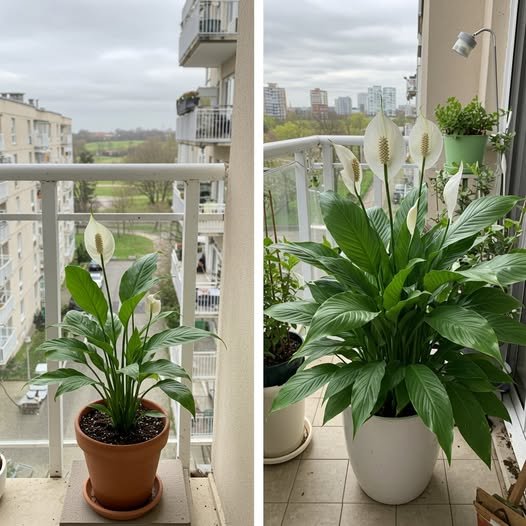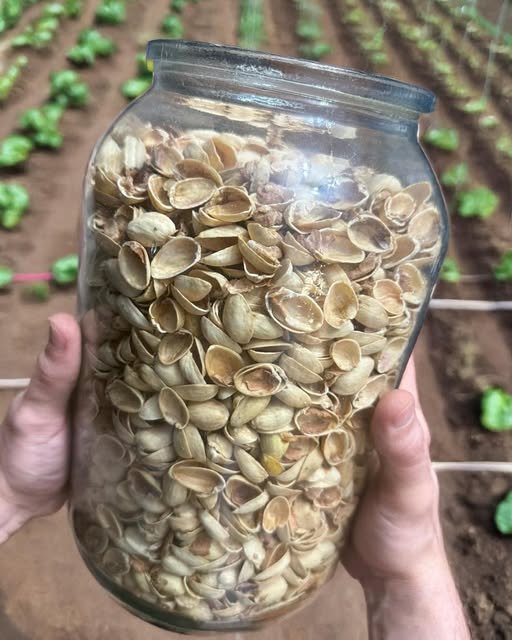Spathiphyllum, commonly known as the Peace Lily, is a beloved houseplant known for its graceful white flowers and air-purifying abilities. Though it’s considered easy to care for, many plant owners struggle to keep their Peace Lily healthy, let alone blooming consistently. If your plant has wilted leaves, isn’t flowering, or seems lifeless, don’t give up. There is a natural, effective method to bring even the most tired Peace Lily back to vibrant life—and it doesn’t involve expensive fertilizers or repotting.
This article explores a simple, time-tested method for growing Spathiphyllum that can turn even a struggling plant into a lush, blooming centerpiece.
The Problem with Most Peace Lilies
Peace Lilies can be sensitive to poor care practices. Common problems include:
Drooping or yellowing leaves
Lack of blooms for months
Leaf tips browning or curling
Soil that remains soggy or compacted
These symptoms usually result from improper watering, nutrient deficiencies, poor soil aeration, or low humidity. While some people resort to synthetic fertilizers, they can do more harm than good if used incorrectly. Instead, a natural tonic can bring lasting results without risking root damage or soil imbalance.
The Secret Tonic for a Healthier Spathiphyllum
A gentle, organic solution can work wonders in reviving a Peace Lily. This homemade mixture restores nutrients, reactivates soil microorganisms, and stimulates flower production—all without harming the plant.
Ingredients:
1 liter of lukewarm, settled water
1 teaspoon of sugar or honey
1 teaspoon of dry yeast
Optional: A few drops of aloe vera juice or a pinch of cinnamon
How to Prepare:
Stir in aloe vera or cinnamon, if using, to boost plant immunity and root development.
Dissolve the sugar or honey in the water to create a nutrient-rich base.
Add the yeast and let the mixture activate for 2 to 3 hours in a warm spot.
- Once ready, use the mixture to water the plant directly at the base, avoiding the leaves.
This tonic should be applied once every 3–4 weeks during the growing season (spring to early autumn). Do not overuse, as excessive yeast can disrupt the soil’s natural balance.
Why It Works
Each ingredient plays a specific role in supporting plant health:
- Sugar or honey feeds beneficial microorganisms in the soil, creating a more nutrient-rich environment for the roots.
- Yeast releases small amounts of natural growth hormones and B vitamins that stimulate new leaf and flower development.
- Aloe vera helps strengthen root cells and speeds up recovery from stress or shock.
- Cinnamon has antifungal properties and promotes root health.
This combination creates the perfect conditions for root regeneration, leaf greening, and, most importantly, flower formation.
Supporting Care Tips for Optimal Results
To get the most out of this natural booster, combine it with ideal growing conditions:
1. Light
Peace Lilies prefer bright, indirect light. Too little light will prevent blooming, while direct sun can scorch the leaves. A spot near a north- or east-facing window is ideal.
2. Watering
Keep the soil consistently moist but not soggy. Wait until the top inch of soil dries out before watering. Avoid letting the plant sit in standing water, as this leads to root rot.
3. Humidity
Spathiphyllum thrives in humidity. Mist the leaves regularly or place the pot on a tray filled with water and pebbles to increase moisture around the plant.
4. Soil
Use loose, well-draining soil rich in organic matter. A mix of peat, perlite, and standard potting soil works well. Compact or heavy soil restricts root oxygen and should be replaced.
5. Leaf Maintenance
Wipe the leaves with a damp cloth every two weeks to remove dust. Clean leaves photosynthesize better and help the plant stay healthy.
What to Expect
After just a couple of applications of this natural tonic and consistent care, you can expect to see:
- Leaves becoming more upright and richly green
- New shoots emerging from the base
- Flowers beginning to form on healthy stems
- A more compact and lush overall appearance
Even severely wilted or “lifeless” Peace Lilies can bounce back with this approach. The key is patience and consistent care.
Final Thoughts
Growing a vibrant, flowering Peace Lily doesn’t have to involve synthetic fertilizers or complicated routines. With a simple mixture of yeast, sugar, and water—enhanced by optional natural boosters like aloe or cinnamon—you can breathe new life into your plant. Combined with proper light, moisture, and a little attention, even the most neglected Spathiphyllum can revive, flourish, and bloom with elegance.
Try this natural method the next time your Peace Lily looks downcast, and you may be surprised by how quickly it transforms into a thriving, beautiful indoor plant.



